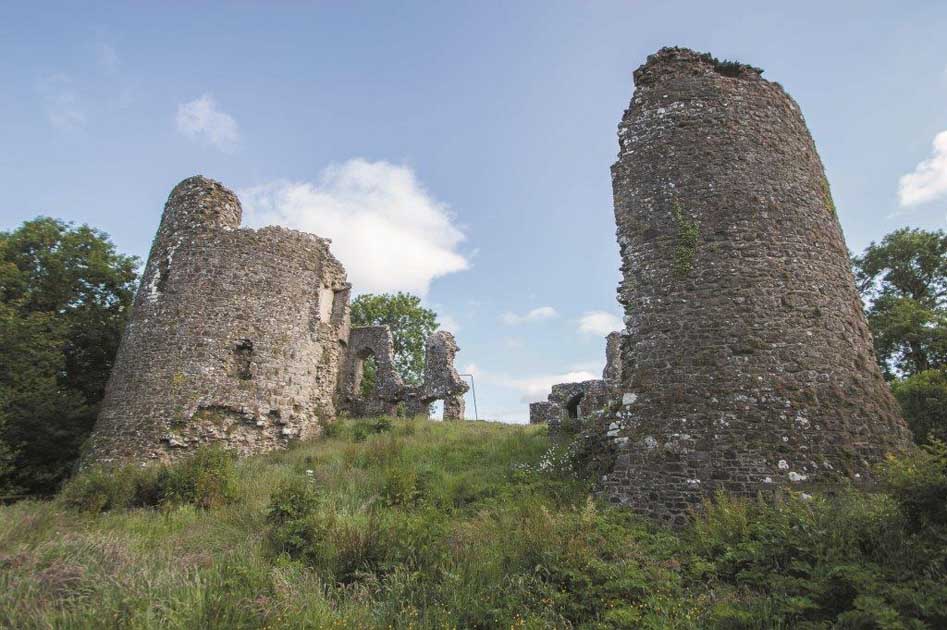Narberth Castle

Narberth Castle Details
Narberth Castle, ruins of C13 courtyard castle occupied to C17 then abandoned
- Closest To: Narberth
- Access: Free Public Access
- Grid Reference: SN110144
Narberth Castle is a ruined stone castle sitting on the southern side of the town on a steep sided ridge overlooking a stream to the west which flows into a larger watercourse to the south. The ruins are a public park and accessible at all times.
The castle is roughly rectangular in plan, but only half of it really survives to see. This is the southern end of the castle, consisting of two round towers about 10 metres apart. Between the two was the great hall, which survives in part, and to the north of the east tower is a vaulted room above which was the lord’s solar. The curtain wall to the west can be traced for about ten metres before it disappears, but a small D-shaped turret has been identified just beyond this. It is likely a similar tower was on the east, at the northern end of the solar building, but this has vanished, and the curtain wall changed direction slightly at this point, leading to the round keep, only part of which survives. What existed in the north-west corner of the castle is unknown, but it is presumably here that the gate entrance was, and it has been postulated that there was a square gate-tower, with a round corner tower adjacent.
The castle in its current form was founded in the 13th century, although it is not clear exactly when as there were at least four different castles built at Narberth by 1299, some of which may have been at a different location. The estate was originally held by King Henry I and passed to his illegitimate son Henry fitzRoy by about 1140. After his death in 1158 in battle on Anglesey, the castle was burned, and the lordship was granted to the Clare Earl of Pembroke. Narberth was rebuilt, and burned again in 1215, during the general upheaval marking the end of King John’s reign. The castle was rebuilt, and remained with the Pembroke earldom until 1245, when the last Marshal earl died. It then passed by marriage to William de Braose, and in 1247 (again by marriage) to Roger Mortimer. Destroyed in 1257. Mortimer founded the first stone castle, but this was burned in 1299. The castle was repaired again, but Roger Mortimer went on to rebel against King Edward II and was executed in 1326. The castle then changed hands multiple times, but only saw military action in 1404, when it was defended by Thomas Carew against the Welsh. It was briefly returned to the Mortimers again between 1413 and 1422, at which point it escheated to the crown. It was held by Edward, Duke of York until 1460, and was then granted to Sir Rhys ap Thomas, but the castle was already in bad condition at that date. It was maintained as a residence into the 16th century before being abandoned.
Become a supporter of my work to access a more detailed history